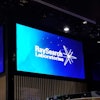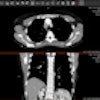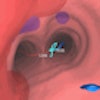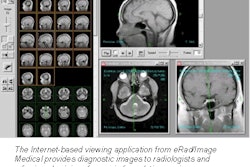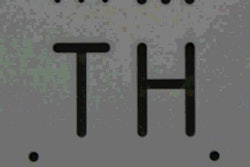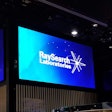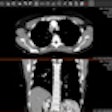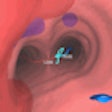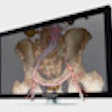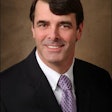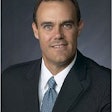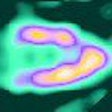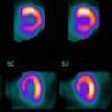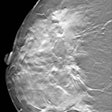Philips Medical Systems has been one of the most active vendors in medical imaging over the past few years, completing four major acquisitions and moving the company's U.S. headquarters from one end of the country to the other. With its acquisition spree now over, Philips has begun to consolidate its far-flung operations under a unified corporate brand that it claims represents the second largest vendor in medical imaging.
As a major multinational firm with extensive brand recognition, Philips has long commanded respect in the medical imaging market. But up through the late 1990s, the company had a number of major holes in its product line: success had eluded it in ultrasound, its position in CT was weak, and it had no presence in nuclear medicine.
Several trends in the 1990s began to put pressure on Philips -- and on other companies with underlying weaknesses. Managed care was squeezing profit margins for both healthcare providers and device vendors, while group purchasing organizations wanted to sign deals with large multimodality firms rather than a host of single-modality vendors. Such economic constraints made it tougher for each modality to support more than a handful of major vendors.
The upshot was that a major dose of consolidation was in order, according to Jack Price, CEO of sales and service for Philips’ North America region.
"What we all realized was that the days of selling features and benefits were long over," Price said. "Our major challenge is to sell product profitably into a very demanding marketplace that is under some considerable pressure financially. By consolidating, we get the strength and the mass to be more responsive."
Vendors began jockeying for position, their eyes on the single-modality firms that were so prevalent in medical imaging at the time. Philips’ first major acquisition in this period was in 1998, with its purchase of ultrasound vendor ATL of Bothell, WA. That gave Philips the ultrasound position it needed so badly.
Things heated up in 2000, when Philips announced deals to buy nuclear medicine vendor ADAC Laboratories of Milpitas, CA, and the healthcare business of Agilent Technologies, a manufacturer of echocardiography and patient monitoring systems based in Andover, MA. The ADAC purchase closed in December 2000 and the Agilent acquisition was completed in August 2001.
But the blockbuster deal came in July, when Philips announced its plan to buy multimodality vendor Marconi Medical Systems for $1.1 billion in a purchase that was completed in October. That acquisition was the first merger between major multimodality vendors since the current phase of consolidation began, and it promises to reshape medical imaging’s competitive landscape.
Integration challenges
Marconi’s strongest operations were in CT, but the company also maintained healthy MRI and nuclear medicine businesses. It also had a PACS unit, and operated Marconi HealthCare Products (Marconi HCP), a supplies distribution business.
The Marconi acquisition poses some integration challenges for Philips as it seeks to merge personnel and products across multiple locations and modalities. CT is the easiest fit -- Marconi’s multislice Mx8000 system is well regarded, and will complement Philips’ own product line.
Prior to the Marconi deal, Philips’ CT line was developed through OEM relationships with Hitachi of Japan and Analogic of Peabody, MA. Hitachi supplies technology for the company’s Secura systems, while Analogic develops the Aura scanner. Price said that Philips plans to maintain relationships with both companies.
There is some product overlap in MRI and nuclear medicine, but at present Philips plans to retain all of the Marconi products and sell them under the Philips brand, according to Price. Philips gains additional heft in both manufacturing capacity and sales and service reach that will serve the company well in the future, he said.
Marconi’s PACS business was not included in the deal, and was retained by Marconi’s parent company, Marconi plc. The purchase did include Marconi HCP, which Philips intends to sell. The company has not yet found a buyer for the business, however, Price said.
Corporate branding
Although Philips allowed ATL to operate for some time under its own corporate logo after the 1998 acquisition, the company is now consolidating all of its businesses under the Philips brand. ATL has been renamed Philips Ultrasound, with Agilent’s ultrasound operations folded into it. ADAC is now Philips Nuclear Medicine, which also includes Marconi’s nuclear medicine products.
Philips will continue to use the ATL and ADAC nomenclature in product names to take advantage of the brand recognition of those marques, Price said. Marconi’s brand had much less cachet in medical imaging, however, as it was adopted in 1999 by the company better known in its incarnation as Picker International. A similar situation exists with Agilent, which until a 1999 spinoff was part of Hewlett Packard. Neither the Marconi nor Agilent brands will be used on Philips products, according to Price.
On the personnel side, Philips has established a pattern of letting executives with acquired companies continue to run their businesses. Former ATL executive Tim Mickelson leads Philips Ultrasound, and also has business-line responsibility for Philips Nuclear Medicine, where Gary Burbach heads the operation and reports to Mickelson.
The situation is also being sorted out in CT and MRI. Leading the company’s global manufacturing and R&D operations in MRI and CT will be Freek Knoet, a long-time Philips executive who will relocate to Cleveland from the Netherlands. A Marconi veteran, Jim Green, will head the company’s CT manufacturing and R&D, while Fred van Ommen, a Philips executive, will serve the same function in MRI. Both Green and van Ommen report to Knoet.
Moving out west
At the same time that it was making acquisitions, Philips decided to move its North American headquarters from Shelton, CT, to Bothell, the Seattle suburb where ATL/Philips Ultrasound is located. Philips made the move because the large number of technologically skilled workers available in the Seattle area matches the company's future employment needs, Price said. Philips has also streamlined its administrative requirements by sharing the same facilities used by Philips Ultrasound.
Philips originally chose Shelton as its corporate headquarters because it intended to conduct manufacturing there, and Shelton has a strong manufacturing base. The company made radiography and fluoroscopy systems in Shelton through the late 1980s, but hasn’t had any manufacturing there since then.
About 25% of the nearly 400 employees in Shelton made the move to Bothell, Price said. At the same time, Philips has been pleased with the availability of highly skilled labor in the Bothell area, and the company is expanding the Philips Ultrasound campus to accommodate new headquarters personnel.
Gaining the number two position
Price believes the company's recent acquisitions have vaulted Philips into the number two position in medical imaging from a revenue perspective, passing Siemens and putting Philips into position behind GE. The company does not yet have figures on its total revenue or number of employees, however, Price said. Philips has also announced that it does not have plans to make any additional major acquisitions, and will now focus on integrating its holdings.
The company's larger size is a necessity in an era of competing forces, when profit margins are eroding while customers continue to demand technological innovation and new services. Larger companies can meet these demands, while at the same time providing new services to customers such as quality improvement programs and asset management techniques, Price said.
"There is a host of things that are nonequipment and more service-related that we can bring together and amalgamate into an offering that will be more of an advantage to the customer than if we were smaller and more single-modality oriented," Price said.
By Brian CaseyAuntMinnie.com staff writer
November 12, 2001
Related Reading
Philips completes Marconi purchase, October 22, 2001
Philips to buy Marconi Medical Systems for $1.1 billion, July 4, 2001
ADAC and Philips merge people and platforms, June 26, 2001
Philips plans $1.7 billion acquisition of Agilent healthcare group, November 17, 2000
Philips to re-enter nuclear medicine market with bid to buy ADAC, November 13, 2000
Copyright © 2001 AuntMinnie.com
